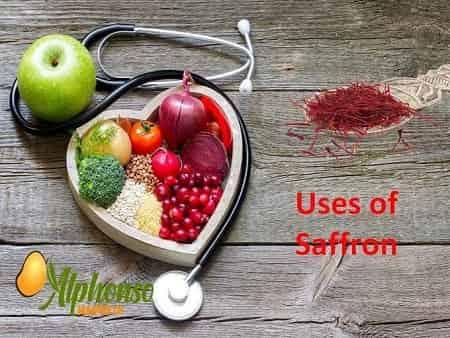
Uses of Saffron
By Prashant Powle
Uses of Saffron Saffron, or Kesar, is one of the best herbal medicines. Uses of Saffron It is derived from Crocus Sativus. The plant grows 15-20 tall with 6 to...
can we drink kesar milk daily
can we drink saffron milk daily
can we use saffron during pregnancy
how to use saffron for face
is kesar worth it
is keshar worth it
is saffron worth it
kesar health benefits
keshar health benefits
Saffron aphrodisiac
Saffron as an aphrodisiac
Saffron for anxiety
Saffron for arthritis and inflammation.
Saffron for cancer
Saffron for cancer cells
Saffron for heart
Saffron for inflammation
Saffron for insomnia
Saffron for lowering cancer risk and cancer cells
Saffron for mild to moderate depression
Saffron for UV protection
Saffron for vision
saffron health benefits
saffron medicinal uses
Side effects of Saffron
uses and benefits of kesar
uses and benefits of keshar
uses and benefits of saffron
uses for kesar
uses for keshar
uses for saffron
uses for saffron in cooking
uses in keshar
uses of drinking saffron milk
uses of kashmiri kesar
uses of kashmiri keshar
uses of kashmiri saffron
uses of kashmiri safron
uses of kehsar
uses of kesar
Uses of Kesar doodh
uses of kesar for health
uses of kesar in cooking
uses of kesar in skin care
Uses of Kesar Milk
uses of kesar on face
uses of kesar spice
uses of keshar
Uses of Keshar doodh
uses of keshar in cooking
uses of keshar in skin care
Uses of Keshar Milk
Uses of Saffron
Uses of saffron doodh
uses of saffron during pregnancy
uses of saffron for health
uses of saffron for pregnancy
uses of saffron for skin
uses of saffron in beauty care
uses of saffron in cooking
uses of saffron in food
uses of saffron in milk
uses of saffron in pregnancy
uses of saffron in skin care
uses of saffron milk
uses of saffron on face
uses of saffron spice
uses of safron
what are the benefits of kesar
what are the benefits of kesar during pregnancy
what are the benefits of keshar during pregnancy
what are the benefits of saffron
what are the benefits of saffron during pregnancy
what are the uses of saffron
why kesar is used
why keshar is used
why saffron is used
Read more
